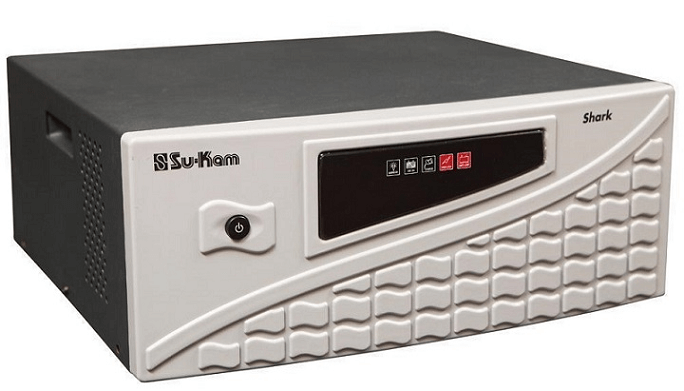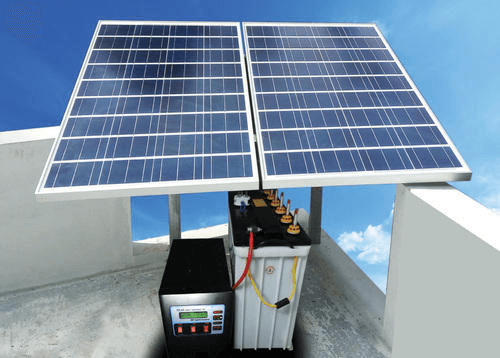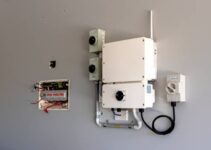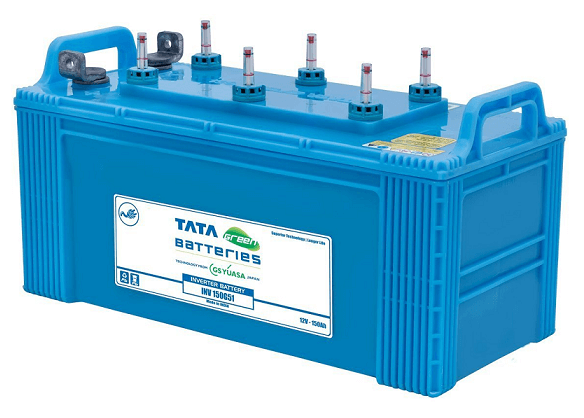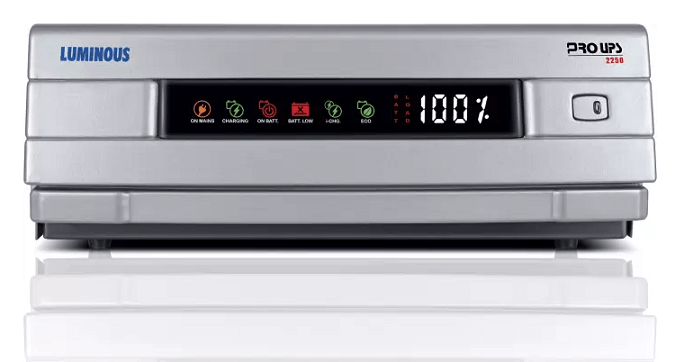Power supply is one of the major challenges that Nigerians face daily. With the poor state of power supply in the country, citizens are forced to seek out alternative sources of power. Fuel prices have also been on the rise due to the removal of subsidies. Because of this, most people have resorted to the use of inverters. One size of inverter that has grown in popularity in recent times is the 5KVA inverter. In this post, we will show you the latest 5KVA inverter prices in Nigeria.
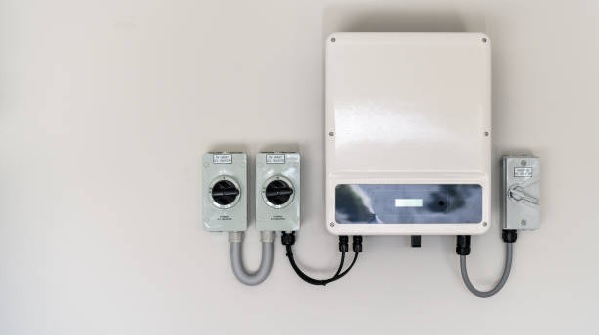
Prices of 5KVA Inverters in Nigeria
Among the several factors that one must consider before purchasing an inverter, one stands out, the price. A knowledge of the prices of inverters helps you to figure out what inverter you can purchase. In this post, we will focus on the prices of 5KVA inverters. We have surveyed the market on your behalf and put together a list showing the latest 5KVA inverter prices in Nigeria. Check them out below:
- SONA 5KVA /48V Pure Sinewave Inverter: ₦350,000
- PZ Premium & Industrial 5Kva 24v Pure Sine Wave Inverter: ₦420,000
- 5KVA/24V SOCCER POWER INDIAN INVERTER (PURE SINE): ₦550,000 – ₦600,000
- 5KVA 24V Pure Sine Wave Digital Display Yohako Inverter: ₦500,000 – ₦700,000
- Foresolar 5kva 48v Pure Sine Wave Inverter With Charger: ₦420,000
- Ipowerplus 5KVA/48V Pure Sine Wave Inverter: ₦420,000 – ₦450,000
- 5kva 24v Pure Sine Wave Inverter With Charger: ₦420,000
- Choice 5kva 48v Choice Pure Sine Wave Inverter: ₦590,000
- 5kva 24v Pure Sine Wave Wall Mount Inverter: ₦440,000
- Power Star 5kva 24v Pure Sine Wave Inverter: ₦399,000
- 5kva 48v Soccer Power Inverter Pure Sine Wave India: ₦485,000 – ₦680,000
- Mercury 5kva 48V Spirit Plus MPPT Solar Hybrid Pure Sine Wave Inverter With Charge Controller: ₦750,000
- Felicity Solar 5Kva 48v Hybrid Inverter With Inbuilt 6000W MPPT Controller: ₦470,000 – ₦495,000
- Two Fans Of PS MPS 5KVA 4KW Solar Hybrid Inverter: ₦40,825 – ₦70,387
- Mercury MI 5000 Digital 5KVA 48V Pure Sinewave Inverter: ₦890,000
- Galaxy Solar 5kVA Hybrid Solar Inverter: ₦480,000 – ₦680,000
- Two Fans Of PS MPS 5KVA 4KW Solar Hybrid Inverter Components And Parts To Replace When Inverter 01 Error Code Alarm: ₦40,825 – ₦70,387
- Felicity Solar 5Kva 48v Hybrid Inverter With Inbuilt 6000W MPPT Controller: ₦450,000 – ₦495,000
- SENTER Solar Hybrid Inverter 5KVA Power DC 48V To AC 220V With 80A MPPT Charge Controller: ₦800,000
- Felicity Solar Solar 5kva 48v Hybrid Inverter: ₦742,000 – ₦800,000
PRICES LAST UPDATED: SEPTEMBER 2, 2023.
Please note that these prices are not constant and several factors may cause them to fluctuate. Regardless, we will constantly watch the market and adjust the prices provided to match the latest changes as soon as they occur. Continue reading to learn more about inverters.
Factors to Consider When Choosing an Inverter
An inverter is a device that converts direct current (DC) from a battery or a solar panel into alternating current (AC) that can power various appliances and devices. Inverters are useful for providing electricity in remote areas, during power outages, or for reducing energy costs.
It is important to note that not all inverters are the same. As such, choosing the right one for your needs can be challenging. That being said, here are some factors to consider when choosing an inverter:
Inverter type
There are different types of inverters, such as pure sine wave, modified sine wave, and square wave inverters. Each type has its own advantages and disadvantages, depending on the application and the load.
Pure sine wave inverters produce the highest quality of AC power, similar to grid power, and can run any device without problems. However, they are also the most expensive and complex to design.
Modified sine wave inverters produce a lower quality of AC power, with some distortion and harmonics, but are cheaper and simpler than pure sine wave inverters. They can run most devices, except for some sensitive or high-precision equipment.
Square wave inverters produce the lowest quality of AC power, with high distortion and noise, and are not suitable for most devices. They are only used for very basic applications, such as lighting or fans.
Power rating
The power rating of an inverter determines how much load it can handle at a given time. It is measured in watts (W) or volt-amperes (VA). The power rating of an inverter should match or exceed the total power requirement of the devices you want to run.
For example, if you want to run a refrigerator (500 W), a TV (200 W), and a fan (100 W), you need an inverter with at least 800 W or 1000 VA of power rating. You should also consider the surge power rating of an inverter, which is the maximum power it can deliver for a short period of time, usually a few seconds.
This is important for starting devices that have high initial current demands, such as motors or compressors. The surge power rating of an inverter should be at least twice the normal power rating.
Efficiency
The efficiency of an inverter is the ratio of the output power to the input power. It indicates how well the inverter converts DC to AC without wasting energy. The higher the efficiency, the less battery power is consumed and the longer the backup time.
An inverter’s efficiency depends on several factors, such as the load level, the temperature, and the quality of the components. Generally, inverters have higher efficiency at higher load levels and lower efficiency at lower load levels. The average efficiency of an inverter ranges from 80% to 95%, depending on the type and quality of the inverter.
Features
Inverters come with various features that enhance their performance and functionality. Some of these features are:
- Automatic voltage regulation (AVR): This feature adjusts the output voltage of the inverter to a stable level, regardless of the fluctuations in the input voltage or the load. This protects the devices from voltage spikes or drops that can damage them.
- Overload protection: This feature shuts off the inverter when the load exceeds its capacity or when there is a short circuit in the output circuit. This prevents overheating and damage to the inverter and the devices.
- Low battery alarm: This feature warns you when the battery voltage is low and needs to be recharged. This helps you avoid running out of power unexpectedly.
- LCD display: This feature shows you important information about the status and performance of the inverter, such as input voltage, output voltage, output frequency, load level, battery level, etc.
- USB port: This feature allows you to charge your mobile phones, tablets, or other USB devices directly from the inverter.
Price
The price of an inverter depends on its type, power rating, quality, brand, and features. Generally, higher-quality inverters with more features and higher power ratings are more expensive than lower-quality inverters with fewer features and lower power ratings. However, price is not always an indicator of quality or suitability for your needs. You should compare different options based on your budget and requirements before making a decision.
Conclusion
That’s it for the latest 5KVA inverter prices in Nigeria. This post has also shown you some factors to consider when choosing inverters.
